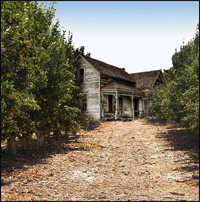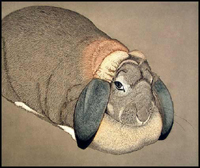
When I was a child Telegraph Road was the boundary that separated the known from the unknown world. Most of what lay to the east of the highway was familiar – markets, schools, tracts of modest homes, and lots of churches – mostly seen from the backseat of the family car.
But to the west of Telegraph stretched a vast oil field, prickly with towering derricks that cast long black lattice shadows across amber-colored soil. The ground had been saturated with a deadly liquid, sprayed everywhere from the backs of tanker trucks to keep living things from sprouting. If the wind blew hard enough to get the grimy earth airborne its acrid scent would haunt you until you bathed.
It was a land of big things standing at a distance from each other. Massive moving parts. Perpetual mechanical labor. Never resting, or changing, or finishing their chores. Seeming to need and offer nothing. It was a place into which a child could not venture on foot because there could be no sensible answer to the inevitable question, “What’s that kid doing going into the oil field?”
So it wasn’t until I got a bicycle that I really saw the details west of Telegraph up close. Even if you’re a pale, quiet kid, if you ride with purpose, adults assume you are going somewhere. That something sanctioned is in play. Something more than a near-automatic response to insatiable curiosity.
Each foray took me deeper and deeper into the wasteland. There I found an endless grid of dirt roads, old pumping stations, rusting chain link fences, and even the occasional incongruous cluster of small, unkempt houses with old cars or pickup trucks abandoned in the front yards.
The bleakness was an irresistible fascination. And going to see it was emancipating. I was where children were not supposed to go. I was exploring on my own terms. As long as I kept moving I had a free pass. It was a harsh counterbalance to the rest of my experience. To the dull swept-porch uniformity of life to the east of the highway.

